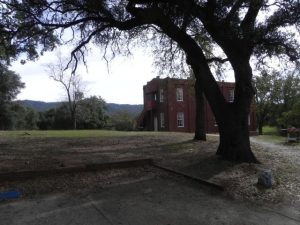Many homeowners plant shade trees to escape the blazing summer sun, but then struggle with what to plant in the shade under those trees. It’s not uncommon to see ferns, fuchsias, camellias, and hydrangeas struggling for survival when it’s 105°, even with thick layers of mulch and continuous drip irrigation. Some of our most commonly planted shade trees are so thirsty that there is little hope of sufficient available moisture to keep damp shade plants thriving beneath them. At the other end of the spectrum, drought- tolerant low-water trees will suffer greatly from the irrigation required for a damp shade garden. With some planning it is possible to have healthy shade trees, and lovely shade gardens, by creating hydrozones.
As Master Gardeners we encourage the creation of hydrozones when planning any garden. A hydrozone is a landscape area where plants with similar water needs and soil characteristics are grouped together. This minimizes the risk of over watering, which is the most common reason for the decline of landscape trees and shrubs.
Creating a favorable hydrozone includes:
(a) Mulching to conserve soil moisture, control weeds, and maintain a uniform soil temperature;
(b) Appropriate irrigation practices to avoid root and crown diseases by watering established trees and shrubs at their drip line instead of allowing water to pool in basins at the crown; and
(c) Planting appropriate plants with similar moisture needs that won’t compete.
While drought-tolerant trees such as Arbutus, Camphor, Carob, Elder, Hazel, Holly, Honey Locust, Madrone, Manzanita, and Olive trees have low water needs and provide shade, planting a damp shade garden around a low water tree can jeopardize the health of the tree. The presence of too much moisture will cause long-term problems with fungus, crown or root rot, weak limbs subject to wind breakage, and an increased vulnerability to insect attack.
Thirsty trees such as Alder, Ash, Beech, Cedar, Cottonwood, Dogwood, Douglas fir, Elm, Maple, Mountain Ash, Pine, Poplar, Redwood, Sequoia, Spruce, Sycamore, Walnut, and Willow are so thirsty that although they are creating a shady cool oasis in an otherwise arid environment, they are sucking up every drop of water in the soil in order to do so. They are not good candidates for damp shade gardens because the damp shade plants will be forever competing with the tree for moisture. There are steps to conserve precious moisture, such as mulching, but even mulching won’t be sufficient to keep a damp shade garden hydrated under a thirsty tree without a high volume of water application.
Mulching has benefits other than just moisture conservation when applied correctly. While mulch actually improves the soil health and is important for optimum tree growth, it’s critical that it never be piled around tree trunks. Keeping mulch back 4″-6″ will maintain air circulation to prevent pest and moisture damage to trunks. Research shows that even thirsty trees will thrive in hot, dry summer climates when mulched out to 2 feet beyond their drip line because cool, damp soil beneath a deep mulch favors the growth of necessary mycorrhizae.
The word mycorrhizae describe a symbiotic association between a beneficial soil fungus (Myco) and the roots (rhiza) of the plants. This relationship is advantageous for both organisms because the plant gains increased water and nutrient uptake from the soil by the intricate net of the fungus. The fungus uses the carbon provided by the plant for its physiological functions, growth, and development.
By utilizing the hydrozone principles of grouping plants that won’t compete for moisture, and appropriately mulching to conserve existing moisture to maintain a cool favorable soil environment for the mycorrhizae, you can have healthy vigorous shade trees and beautiful dry shade gardens.
.
BIBLIOGRAPHY
Ogden, Lauren Springer., and Rob Proctor. Passionate Gardening: Good Advice for Challenging Climates. Golden, CO: Fulcrum Pub., 2000. Print.
“Quick Tips Landscape Plants: Fertilizing & Watering.” UC IPM Program, University of California Agriculture and Natural Resources, Pub. Mar 2011. Web. 13 Jul 2014. <http://www.ipm.ucdavis.edu/QT/landscapeplantscard.html>.
Springer, Lauren. The Undaunted Garden: Planting for Weather-resilient Beauty. Golden, CO: Fulcrum Pub., 1994. Print.
“Wide Mulch Rings Speed Tree Growth.” MU IPM Program, Missouri Environment and Garden, Division of Plant Sciences. Pub. 1 Feb. 2010. Web. 13 Jul 2014.
<http://ipm.missouri.edu/meg/2010/2/Wide-Mulch-Rings-Speed-Tree-Growth/>.
Stacy Ryerson is a University of California Cooperative Extension Master Gardener and Master Food Preserver of Amador County.


